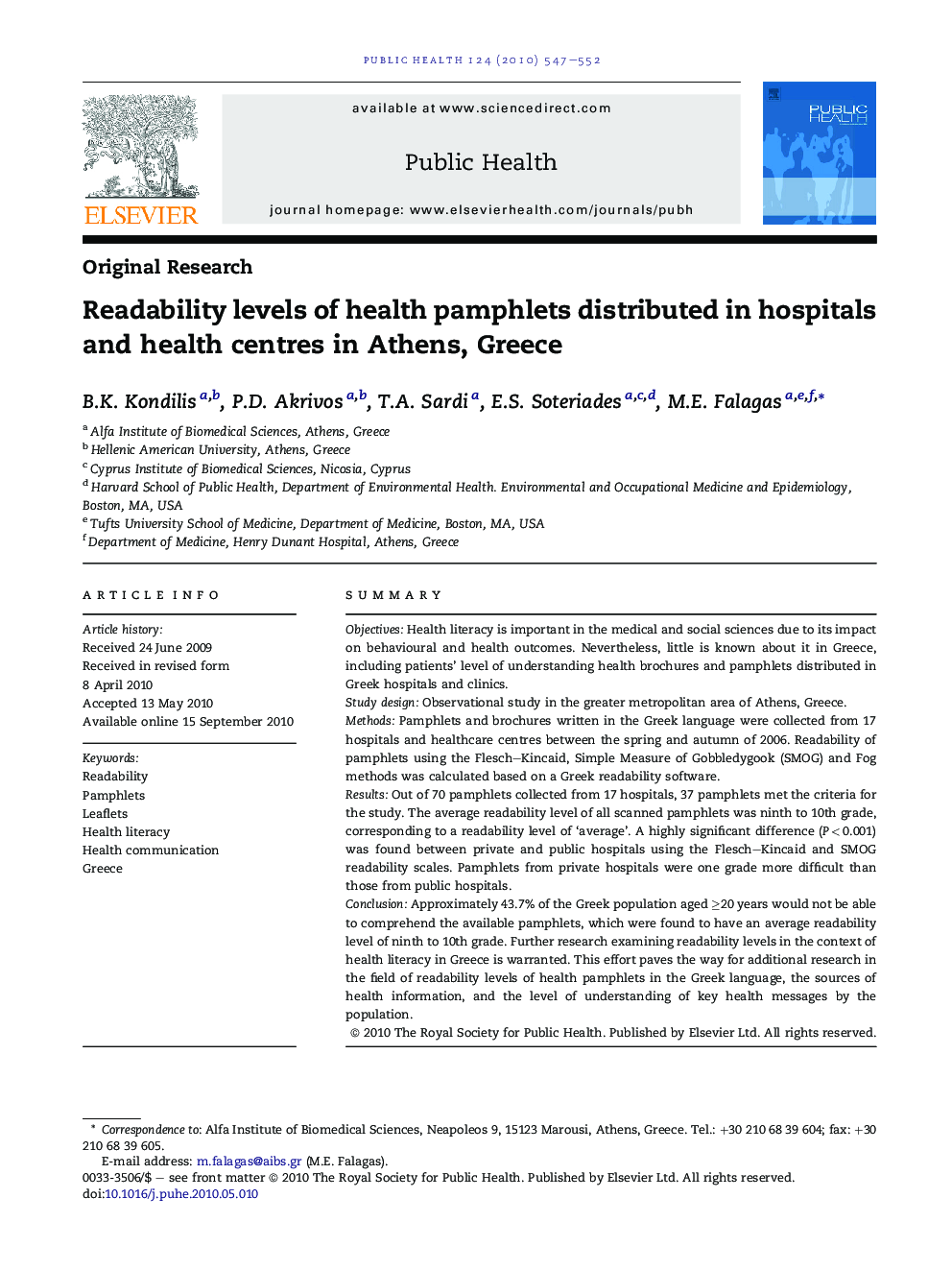| Article ID | Journal | Published Year | Pages | File Type |
|---|---|---|---|---|
| 1087873 | Public Health | 2010 | 6 Pages |
SummaryObjectivesHealth literacy is important in the medical and social sciences due to its impact on behavioural and health outcomes. Nevertheless, little is known about it in Greece, including patients’ level of understanding health brochures and pamphlets distributed in Greek hospitals and clinics.Study designObservational study in the greater metropolitan area of Athens, Greece.MethodsPamphlets and brochures written in the Greek language were collected from 17 hospitals and healthcare centres between the spring and autumn of 2006. Readability of pamphlets using the Flesch–Kincaid, Simple Measure of Gobbledygook (SMOG) and Fog methods was calculated based on a Greek readability software.ResultsOut of 70 pamphlets collected from 17 hospitals, 37 pamphlets met the criteria for the study. The average readability level of all scanned pamphlets was ninth to 10th grade, corresponding to a readability level of ‘average’. A highly significant difference (P < 0.001) was found between private and public hospitals using the Flesch–Kincaid and SMOG readability scales. Pamphlets from private hospitals were one grade more difficult than those from public hospitals.ConclusionApproximately 43.7% of the Greek population aged ≥20 years would not be able to comprehend the available pamphlets, which were found to have an average readability level of ninth to 10th grade. Further research examining readability levels in the context of health literacy in Greece is warranted. This effort paves the way for additional research in the field of readability levels of health pamphlets in the Greek language, the sources of health information, and the level of understanding of key health messages by the population.
